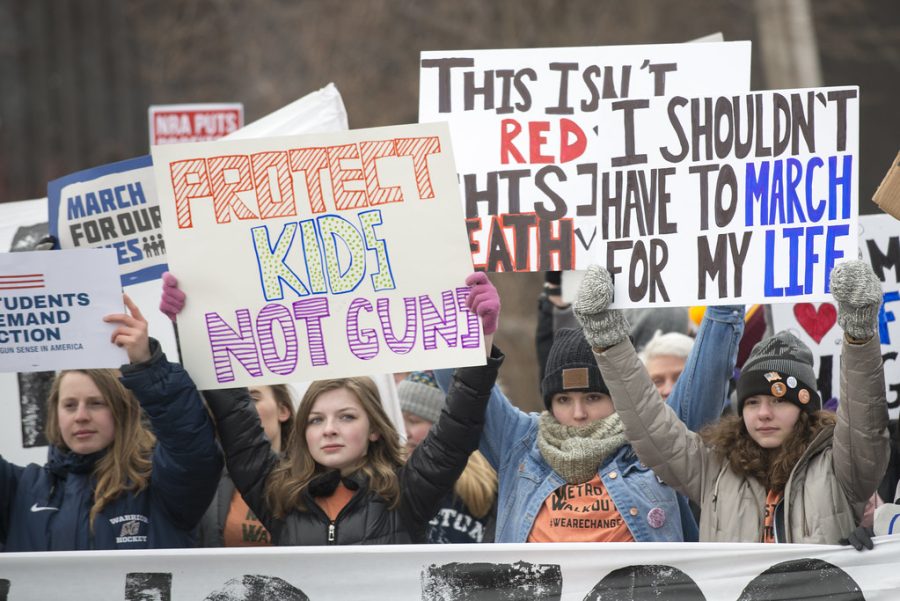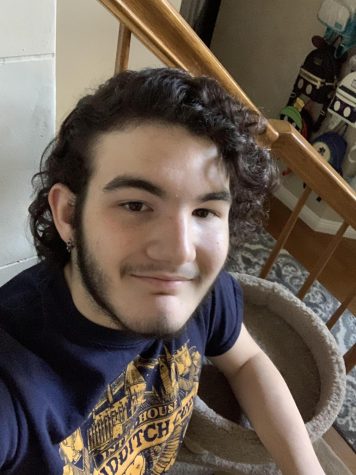The Depressing Trend of School Shootings Across the U.S.
Trigger warning: School shootings, descriptions of violence/death.
March for Our Lives on March 24, 2018 in Saint Paul, Minnesota.
February 23, 2023
“He shot my teacher and told my teacher good night and shot her in the head… I thought [the gunman] was going to come back to the room, so I grabbed the blood and I put it all over me.” – Miah Cerrillo, Uvalde.
Last year, there were 300 school shootings. Depending on the state you live in, that can total almost two shootings for every school day on your calendar. What used to be a once-in-a-decade tragedy that must be met with immediate action and prevention has become a disturbing routine amongst those in our country.
School shootings have become so common that schools have had to implement drills for them, much akin to fire and earthquake (or tornado) drills. Students are taught by their teachers and administrators how to hide and barricade themselves from shooters in the event that their school is the next victim of this growing trend.
“Looking back, I see myself sitting under there. Under that table, thinking these were my last moments of life… but I survived. I walked out of that classroom thinking, ‘Why not me?’ I still think this every single day.” – Eden Hebron, Parkland.
Well beyond six thousand students were injured or killed in school shootings last year, giving 2022 a rather macabre record for deaths of children due to shootings. However, that is nothing compared to the number of parents, friends, and family that have suffered due to the loss of their children and loved ones, and does not account at all for the thousands of students who have been left mentally scarred by their experiences.
Many victims have been placed in compromising positions, forced to choose between saving themselves and saving a friend, or worse, a family member. Students, children, and teenagers were faced with the impossible task of deciding whether to run and live with guilt or risk their lives for those around them. No matter what choice they make, the simple fact that our youth are having to ask themselves these questions is truly sickening.
“I thought, ‘My brother is still in there. I can’t leave him. I actually tried going back in… There were all these people around me, flooding the doors and running, saying, ‘You have to run.’ But I felt guilty for running. I didn’t want to leave my brother in there.” – Ava Swieczkowski, Oxford.
Many survivors have gone on to start and support charities for schools and students affected by shootings, with some taking an extra step to share their stories with the public and speak out against rampant gun violence in our country. Mass shootings are not exclusive to schools, but school shootings are uniquely grotesque as our children are the ones being wounded, killed, and scarred by these atrocities.
Here at our school and elsewhere in the valley live students, staff, and family who have witnessed a shooting first-hand or know those who were killed and injured due to a shooter. As such, we owe it to not only our country but to our friends and neighbors to remember these shootings and those who have lost their lives because of them.
“I am unbelievably angry, but I’m not going to turn my anger into hate. I’m going to channel that anger. I’m going to create some real change… I have no way to express how I feel, how hurt I feel, and the hurt everybody in Uvalde feels. I’m doing this for you, sister. If you can see me, I’m doing this for you.“ – Jazmin Cazares, Austin.
From Sandy Hook to Parkland to Uvalde, shootings leave a scar on students, staff, and families wherever they occur. If you wish to give to the communities that have suffered, you can donate to the National Compassion Fund to aid those who have been wounded or have lost friends and family in mass shootings across the U.S.




